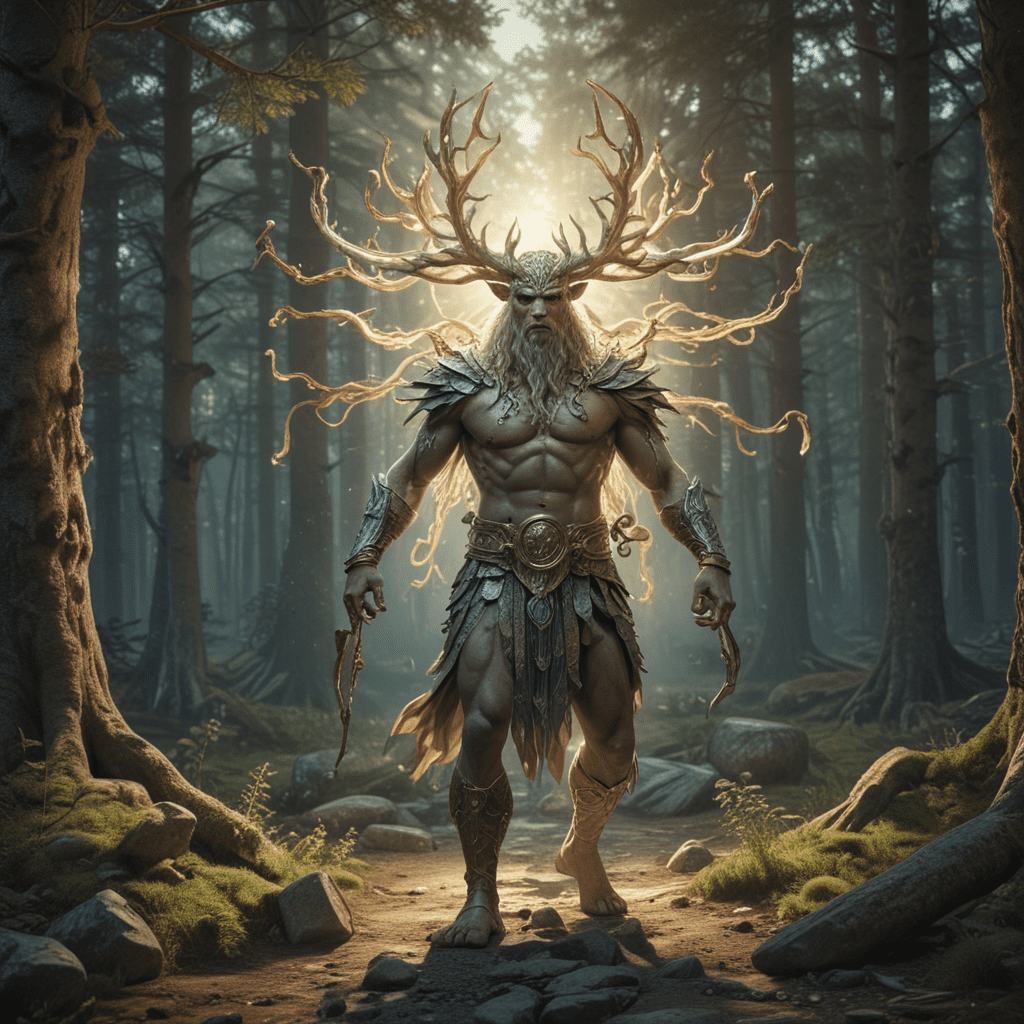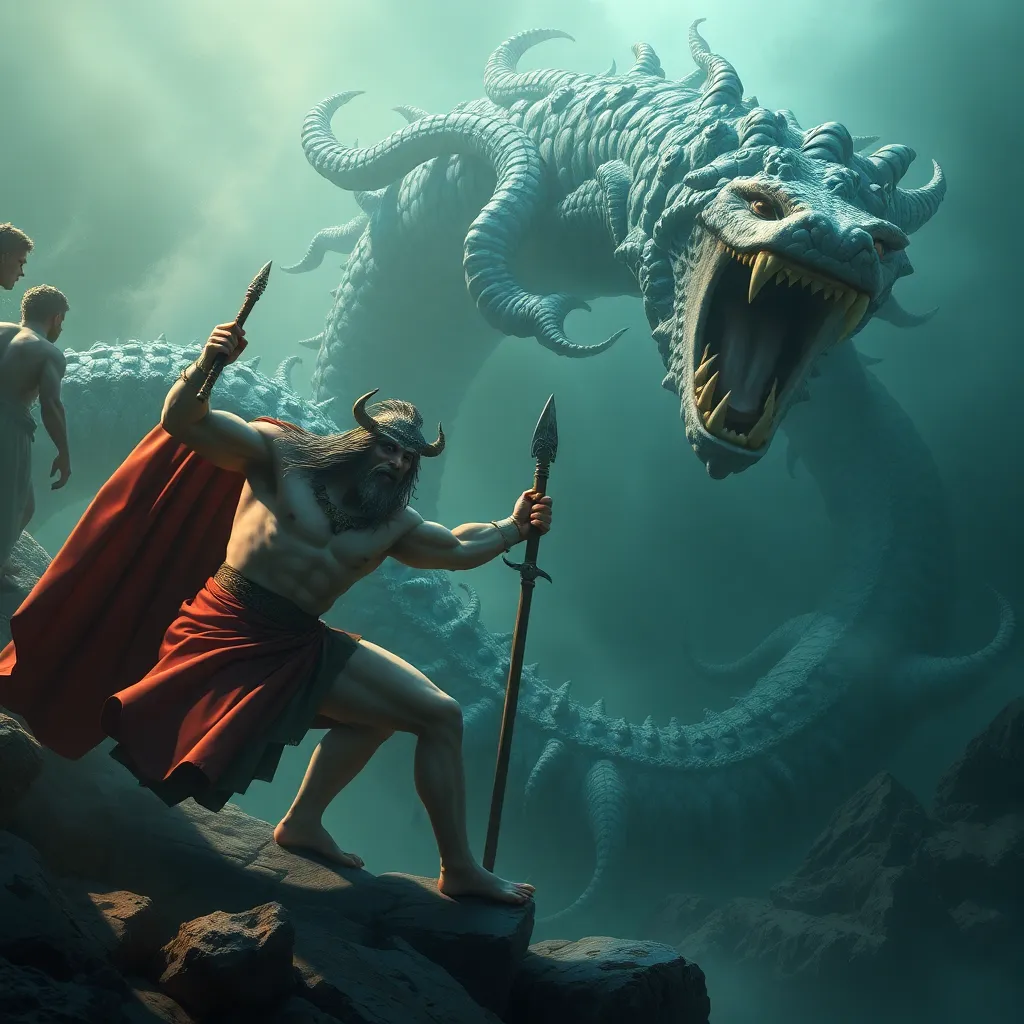1. Introduction: Finnish Mythology’s Unique Perspective
Finnish mythology, steeped in the primeval forests and shimmering lakes of Finland, stands distinct among world mythologies, reflecting a deep connection to nature and a worldview that embraces duality and transformation. Its tales narrate the origin of the universe, cosmic battles, and enduring quests, showcasing an intricate tapestry of gods, heroes, and magical beings.
2. The Creation Myth: From Chaos to Order
Finnish mythology begins with a chaotic void, an ethereal darkness known as the "Alku." From its primordial depths emerged Ilmatar, the Aether Maiden. She floated upon the endless void, pregnant with creation. A fierce wind impregnated her, causing her to give birth to Väinämöinen, the wise sorcerer and father of all creation. Through his incantations, he separated water from sky, forming the basis of the cosmos.
3. The Kalevala Epic: A Tapestry of Legends and Heroes
The Kalevala stands as the heart of Finnish mythology, an epic poem compiled in the 19th century. It weaves together a captivating collection of tales, recounting the journeys and struggles of legendary heroes: Väinämöinen, the enigmatic sage; Ilmarinen, the mighty blacksmith; and Lemminkäinen, the audacious warrior. Their quests for love, knowledge, and glory resonate deeply within the tapestry of Finnish culture.
4. Väinämöinen: The Wise and Powerful Magician
Väinämöinen, the central figure of Finnish mythology, embodies wisdom, creativity, and the power of magic. As the son of Ilmatar, he possesses an ancient knowledge that enables him to shape the world through song and incantation. His profound connection to nature allows him to communicate with animals and control the elements, making him a revered figure both feared and respected.
5. Ilmarinen: The Masterful Smith
Ilmarinen stands as the mastercraftsman of Finnish mythology, renowned for his extraordinary skill and ingenuity. His prowess as a smith forged the magical artifacts essential to the epic tales. The Sampo, a mythical artifact of prosperity and harmony, is his most celebrated creation, becoming the object of intense desire and conflict among different characters.
6. Louhi: The Enchantress of Pohjola
Louhi, the enigmatic ruler of Pohjola, embodies the forces of darkness and magic. Her power extends over the underworld, where she weaves spells and charms to manipulate events. Louhi's unyielding determination makes her a formidable adversary, driving her to seek the magical Sampo at any cost. Her complex character adds an element of intrigue and danger to the Finnish mythological landscape.
7. The Battle for the Sampo: A Conflict of Desires
The Sampo, a wondrous artifact of boundless prosperity, becomes the focal point of a fierce battle between the heroes of Kalevala and the forces of Pohjola. Each side covets the Sampo's ability to grant wealth and happiness, leading to a tumultuous clash of wills and powers. The outcome of this conflict shapes the destiny of the Finnish people, underscoring the consequences of greed and the fragility of harmony.
8. The Kantele: A Symbol of Connection and Healing
The kantele, a traditional Finnish string instrument, holds a profound significance in mythology. Its enchanting melodies possess the power to soothe troubled hearts, heal wounds, and connect individuals to the spirit world. Väinämöinen's mastery of the kantele allows him to bring harmony to chaotic situations, showcasing the transformative potential of music and art.
9. The Power of Charms and Spells: Connecting with the Supernatural
Finnish mythology is imbued with a deep belief in the potency of charms and spells. These incantations, passed down through generations, provide a means of interacting with the supernatural realm. Through carefully crafted words and rituals, individuals seek to influence events, protect themselves from harm, and gain insight into the enigmatic forces that shape their world.
10. Conclusion: The Enduring Legacy of Finnish Mythology
Finnish mythology, with its vivid tapestry of characters, epic battles, and profound spiritual insights, continues to captivate audiences worldwide. Its stories resonate with themes of creation, transformation, conflict, and the indomitable spirit of humanity. Embedded within the core of Finnish culture, these myths and legends serve as a testament to the enduring power of storytelling, connecting us to our past, present, and future.
FAQ
Q: What are the main themes found in Finnish mythology?
A: Finnish mythology explores themes of creation, transformation, conflict, and harmony. It examines the relationship between humanity and nature, the power of magic, and the enduring legacy of storytelling.
Q: Who is the central figure in Finnish mythology?
A: Väinämöinen, the wise sorcerer and father of all creation, serves as the central figure in Finnish mythology. His magical abilities and profound wisdom play a pivotal role in shaping the world and guiding the destinies of other characters.
Q: What is the significance of the Sampo in Finnish mythology?
A: The Sampo is a mythical artifact that embodies prosperity and happiness. Its creation by the mastercraftsman Ilmarinen sparks a fierce battle between the heroes of Kalevala and the forces of darkness, underscoring the consequences of greed and the fragility of harmony.
Q: How does music play a role in Finnish mythology?
A: Music, particularly the enchanting melodies of the kantele, holds a profound significance in Finnish mythology. Väinämöinen's mastery of the kantele allows him to soothe troubled hearts, heal wounds, and connect individuals to the spirit world, showcasing the transformative potential of art and music.



